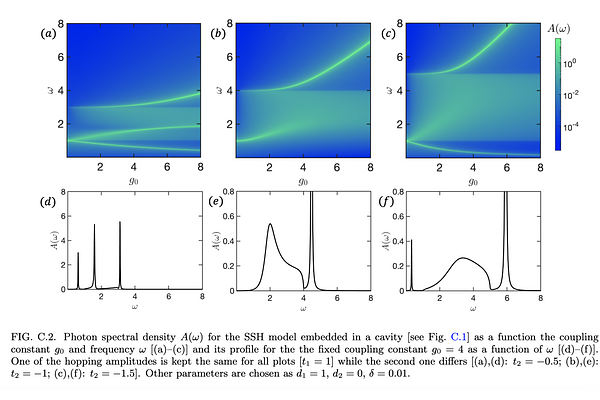Cavity-induced charge transfer in periodic systems: length-gauge formalism

Cavity-induced charge transfer in periodic systems: length-gauge formalism
Ekaterina Vlasiuk, Valerii K. Kozin, Jelena Klinovaja, Daniel Loss, Ivan V. Iorsh, Ilya V. Tokatly
AbstractWe develop a length-gauge formalism for treating one-dimensional periodic lattice systems in the presence of a photon cavity inducing light-matter interaction. The purpose of the formalism is to remove mathematical ambiguities that occur when defining the position operator in the context of the Power-Zienau-Woolley Hamiltonian. We then use a diagrammatic approach to analyze perturbatively the interaction between an electronic quantum system and a photonic cavity mode of long wavelength. We illustrate the versatility of the formalism by studying the cavity-induced electric charge imbalance and polarization in the Rice-Mele model with broken inversion symmetry.
5 comments
scicastboard
"It is a bit unclear what problem the paper is attempting to solve. There is a standard gauge-matter coupling that is introduced through a co-variant derivative k->k -eA. In the context of solids, A, is a classical (non-fluctuating) field, in the context of standard QED, A is a free fluctuating quantum field, for cavities it's also fluctuating but constrained by a finite-size quantization of the cavity light. It would be helpful if the authors could clarify, why the standard (and in my opinion the only) way to couple to a gauge field is not correct or problematic here?"
Thank you,
ScienceCast scientific board